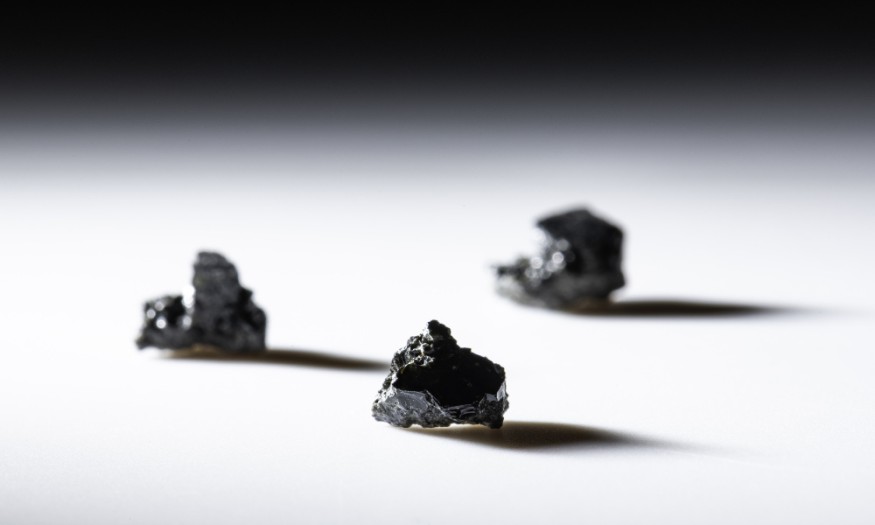A strong magnetic field currently surrounds Earth, formed by whirling liquid iron in the planet's core. The planet's magnetic field could be nearly as old as the planet itself, and it contrasts sharply with the moon, which has no magnetic field at all. However, recent research sheds light on a puzzle prompted by pebbles returned by Apollo.
Researchers from Rochester and other institutions issued a study titled "Absence of a Long-Lived Lunar Paleomagnetosphere," which detailed their findings on a crucial factor impacting the types of resources that might be discovered on the moon in the future. The study looked into whether the moon had a long-lasting magnetic field at any point during its history.

Debunking Magnetic Moon Theory
Astronomy.com said that all of the samples from the moon currently being studied by researchers worldwide were collected during the Apollo era. Apollo 16 collected the lunar samples visible in 1972. To debunk the Magnetic Moon Theory, scientists from the University of Rochester studied the moon glass.
The team's discoveries have called into question certain long-held beliefs about the moon. The study's first author John Tarduno believes that there is a new paradigm for the lunar magnetic field. The moon lacks a magnetic shield, researchers claimed in "The End of the Lunar Dynamo." However, whether it had one in the past has been a source of contention.
Tarduno added in a statement that there has been speculation since the Apollo missions that the moon possessed a magnetic field that was as powerful as or stronger than the Earth's magnetic field, roughly 3.7 billion years ago.
Moon's Tiny Core
The Conversation said that the hypothesis that the moon possessed a magnetic shield was based on evidence acquired in the 1970s, which included the study of samples collected during the Apollo missions. According to the analysis, the samples possessed magnetism, which was thought to be caused by the presence of a geodynamo.
Tarduno said per Futurity that the moon's core is very tiny, and driving all of that magnetic field would be challenging. Moreover, he said that earlier observations of a strong magnetic field were not carried out utilizing heating tests. Other techniques were applied, which may or may not have accurately recorded the magnetic field.
Moon Glass Had Missing Magnetization
Miami Herald said that the researchers used CO2 lasers to heat glass samples collected during previous Apollo missions for a brief period in their latest investigation. They can avoid tampering with the samples using this strategy.
They then used superconducting magnetometers with high sensitivity to quantify the magnetic signals emitted by the samples more precisely. The magnetization in the samples was determined to be the consequence of strikes from meteorites or comets rather than magnetization caused by the presence of a magnetic shield.
Moon Never Had A Long-Lasting Magnetic Field
In a Science Daily report, Tarduno said that the findings show that the moon has never had a prolonged magnetic field. Tarduno explained that samples they analyzed should have all gained magnetization if there had been a magnetic field on the lunar surface, but the previous researchers found that they did not.
This new understanding of lunar magnetism has far-reaching consequences for the probable presence of precious materials and information about the old Sun and Earth in lunar soils.
Solar particles cannot reach a planet or moon because magnetic fields are working as shields, Inverse said. Solar wind can impact the moon's surface directly without a magnetic field, implanting elements like helium-3 and hydrogen into the soil.
Due to the lack of a long-lasting magnetic field on the moon, these elements may have accumulated in soils for billions of years longer than previously assumed.
There is scientific importance as well. Solar wind elements could provide insight into the Sun's evolution. Furthermore, components of the Earth's atmosphere can be stored on the lunar surface as the moon orbits through Earth's magnetic field, revealing details about the early Earth.
The lack of a long-lasting magnetic field on the moon may appear to some to be a setback, but the researchers believe it might lead to a scientific gold mine and a valuable cache of possible resources.
RELATED ARTICLE : Superconductivity Research: Researchers Develop New Material that Enables Quantum Information-Based Technology
Check out more news and information on Space in Science Times.
© 2025 ScienceTimes.com All rights reserved. Do not reproduce without permission. The window to the world of Science Times.








